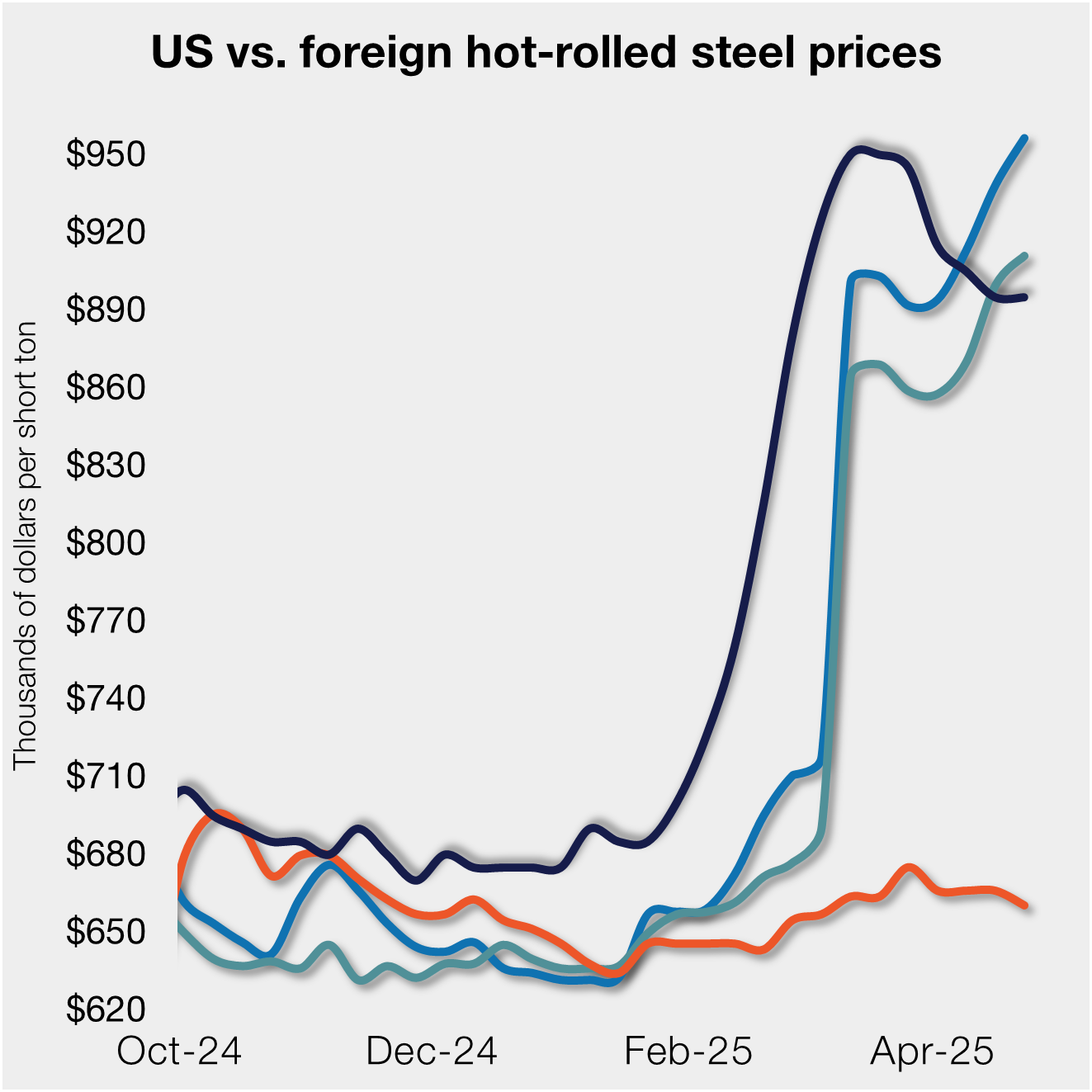Steel Products

Leibowitz on Trade: What Happens Now to the WTO?
Written by Lewis Leibowitz
November 9, 2019
Trade attorney and Steel Market Update contributor Lewis Leibowitz offers the following update on events in Washington:
The world has grown accustomed to the World Trade Organization. A world without a means to settle disputes through negotiations or, if agreement is impossible, binding dispute resolution, is a hallmark of the WTO system.
From 1948 to 1994, the postwar trade order was handled by what was almost universally regarded as an inadequate dispute settlement system. Quite a few disputes went before the council of the General Agreement on Tariffs and Trade (GATT). But the decisions of those panels were not subject to appellate review and were not “binding” on GATT members. While some members implemented most or all of the decisions that did not go their way, many others did not. Even the members that did implement most or all of the decisions that went against them took their time doing it.
The Uruguay Round beefed up the dispute settlement system. It created a new Dispute Settlement Understanding with procedural rules and a process for appealing unfavorable decisions. It also allowed WTO members to impose import restrictions against other members that violated the rules and failed to change their practices even after decisions went against them.
{loadposition reserved_message}
The United States has, for a number of years, complained that WTO panels (the first stage of the dispute resolution system) and the Appellate Body (the second and last stage) imposed obligations on the United States that it “never agreed to.” In other words, the U.S. is claiming that the WTO’s interpretations of the WTO agreements are wrong. It’s more accurate to say that the United States disagrees with these adverse WTO decisions, because the process of adjudicating disputes starts with analyzing the language of the agreements pertinent to the particular dispute.
Since 2017, the United States has refused to permit members of the seven-member Appellate Body to swear in new members. Next month, two of the remaining three members’ terms will expire. The Appellate Body will not be able to function. We are at the point where one of the fundamental reforms of the WTO system will literally expire.
What is going to replace it? There will surely be no end to disputes. The United States is the defendant in a large percentage of these cases, and it loses a lot of them, especially cases on “trade remedies,” antidumping and countervailing duties. The United States has a bunch of cases pending in which it is the plaintiff, including challenges to the “national security” Section 232 tariffs on steel and aluminum. Those cases will be decided by panels, but the appellate process as we know it won’t function. The cases will not be decided any time soon.
An important function of dispute settlement cases is to implement retaliation if the losing country fails to fix the violations found by the WTO. Gaining permission to impose retaliatory tariffs is a long and detailed process; and it should be, because the WTO is aimed at removing barriers to trade rather than erecting new ones. In perhaps the last official act of the Appellate Body on Nov. 1, it permitted the People’s Republic of China to impose tariffs on $3.6 billion in U.S. exports because the U.S. has failed to implement an adverse decision in a single dispute settlement case, known as DS471 (“United States — Certain Methodologies and their Application to Anti-Dumping Proceedings Involving China.”). Retaliation usually takes the form of increased tariffs. However, in the current trade war between the U.S. and China, more tariffs might not be China’s best approach.
More broadly, WTO members are increasingly frustrated by the refusal of the United States to allow the Appellate Body to function. Some countries are working on alternative tribunals to replace the Appellate Body, rather than having cases stagnate. If the WTO cannot resolve disputes, the trade equivalent of gunfights in the street may replace the courtroom. As Alan Wolff, Deputy Director General of the WTO, said last week, it will mean “pure chaos.”
The European Union has agreed with Norway (which, as all trade wonks know, is not in the European Union) to an “interim” method of dispute settlement while the Appellate Body is non-functional. The EU and Canada have also agreed on a way forward. The U.S. has objected to these interim solutions, claiming that an alternative dispute system would prejudice other WTO members. We are at the very beginning of all this byplay.
Dispute settlement paralysis, which the U.S. seems to desire, is perhaps a means to an end—that end being reform of the WTO system and restoring active negotiations among WTO members. It is perhaps more likely that the negotiating paralysis that has persisted for nearly 20 years now will continue. The system will become ever less relevant until the pressure for reinvention of it becomes irresistible—or trade “gunfights in the streets” become, as they were in the 1930s, the norm.
China Product Exclusions—New Rules
Following up on last week’s update, the United States and China have revised procedures for product exclusions from the China Section 301 tariffs.
On Oct. 24, 2019, the Office of the United States Trade Representative published a new notice setting out procedures for requesting exclusions from the Section 301 tariffs on “List 4A” of products made in China that are subject to tariffs. The tariffs went into effect for these products on Sept. 1, 2019.
The procedures for requesting exclusions are similar to those for List One, List Two and List Three. The newest list requires that exclusion requests be filed on or after Oct. 31, 2019, and on or before Jan. 31, 2020. A new “Exclusion Request Form” was included in the notice. Preparing these requests requires a high degree of confidence that the classification of the imported product under the Harmonized Tariffs Schedules of the United States is correct.
Exclusion requests for List 4B, which is scheduled to become effective on Dec. 15, 2019, are not yet authorized. They may never go into effect if the “Phase One” deal is negotiated between the Trump administration and China before Dec. 15.
In a sign that the China tariffs may be around for a while, China has also initiated an exclusion request procedure for the tariffs China imposed on U.S. exports in retaliation for the U.S. Section 301 tariffs. The process appears to resemble the U.S. exclusion process. China held off until last month announcing an exclusion process because it believed that the tariffs would not last very long. That view is now not as widely held as it once was, apparently.
Lewis Leibowitz
The Law Office of Lewis E. Leibowitz
1400 16th Street, N.W.
Suite 350
Washington, D.C. 20036
Phone: (202) 776-1142
Fax: (202) 861-2924
Cell: (202) 250-1551

Lewis Leibowitz
Read more from Lewis LeibowitzLatest in Steel Products

S232 lifts EU HR price over US, Asian HR still well behind
Domestic hot-rolled coil prices were flat this week after dropping for four straight weeks. Most offshore markets bucked the trend and gained ground.

SMU Steel Demand Index dips into contraction
SMU’s Steel Demand Index has moved into contraction, according to late April indicators. The slowdown comes in response to growing tariff uncertainty after the index reached a four-year high in late February.

Nucor selects Fives Group for new galv line at CSI
Nucor Corp. has tapped Fives Group as its partner in designing and manufacturing the new continuous galvanizing line being added at its California Steel Industries (CSI) joint venture in Fontana, Calif.

AISI: Raw steel production levels off near six-month high
The volume of raw steel produced by US mills remained relatively flat last week, maintaining the rebound seen one week prior, according to the American Iron and Steel Institute (AISI). Previously at the second-highest rate of the year, production continues to hold at one the strongest levels recorded over the last six months.

Nucor keeps HRC price unchanged
Nucor has kept its weekly hot-rolled (HR) coil price flat this week, after a marginal cut the previous week.
